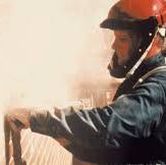
OSHA has published several new resources intended to help employers meet the requirements of its silica standard for construction. For example, a customizable PowerPoint presentation (.PPTX) allows employers, instructors, and others to tailor their training to include specific tasks and controls used in their workplace. Trainers can also modify the level of detail on topics such as alternative exposure control methods and medical surveillance as appropriate for specific employers. Other new resources include a five-minute video on protecting workers from silica hazards; a series of short videos on controlling silica dust in construction for six common tasks; and a new frequently asked questions page, which was developed in consultation with industry and union stakeholders. The series of videos focuses on tasks from the construction standard’s table 1, which specifies exposure control methods when working with materials containing crystalline silica. The new FAQ page addresses topics such as the scope of the standard, definitions, exposure control methods, housekeeping, written exposure control plans, medical surveillance, employee information and training, and recordkeeping.
OSHA’s final rule to protect workers from exposure to respirable crystalline silica was published in March 2016 and comprises two standards, one for construction and one for general industry and maritime. The respirable crystalline silica construction standard became enforceable on Sept. 23, 2017. The standard established a new 8-hour time-weighted average permissible exposure limit of 50 µg/m3, an action level of 25 µg/m3, and ancillary requirements. The new PEL is approximately 20 percent of the previous PEL for construction.
OSHA previously published a compliance guide (PDF) intended to help small business employers comply with the respirable crystalline silica standard for construction. Different sections of the guide correspond to the major provisions of the silica standard for construction. The guide’s sections include information on specified exposure control methods, alternative exposure control methods, respiratory protection, housekeeping, medical surveillance, and more.
OSHA’s final rule to protect workers from exposure to respirable crystalline silica was published in March 2016 and comprises two standards, one for construction and one for general industry and maritime. The respirable crystalline silica construction standard became enforceable on Sept. 23, 2017. The standard established a new 8-hour time-weighted average permissible exposure limit of 50 µg/m3, an action level of 25 µg/m3, and ancillary requirements. The new PEL is approximately 20 percent of the previous PEL for construction.
OSHA previously published a compliance guide (PDF) intended to help small business employers comply with the respirable crystalline silica standard for construction. Different sections of the guide correspond to the major provisions of the silica standard for construction. The guide’s sections include information on specified exposure control methods, alternative exposure control methods, respiratory protection, housekeeping, medical surveillance, and more.
